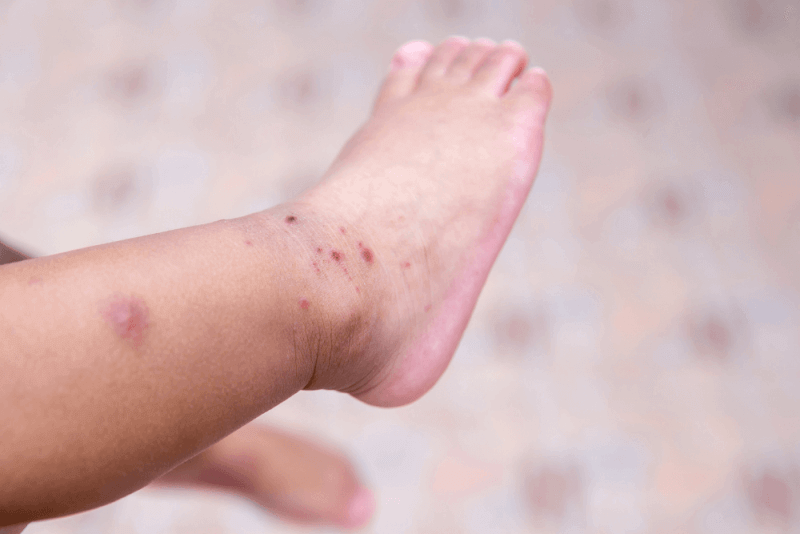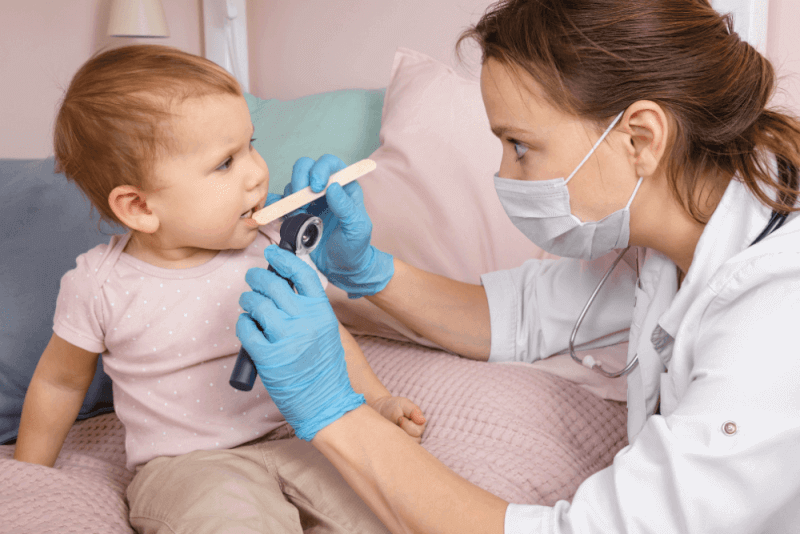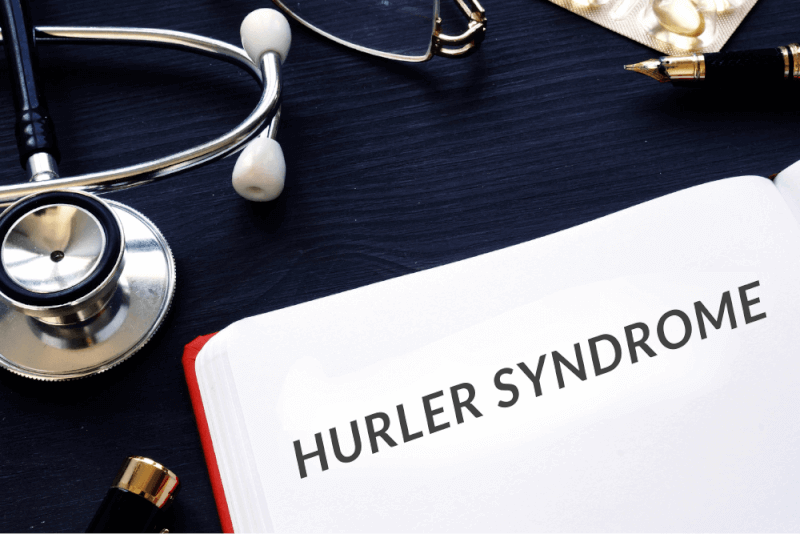30 Second Summary
- Kawasaki disease is a disease that occurs in children aged 5-6 years and is characterized by fever, rash, redness in the mouth, tongue and eyes.
- The exact cause is not known. Causes such as viral infection, autoimmune response and genetic factors are thought to play a role.
- Symptoms are progressive. It has three phases.
- The first stage of the disease is characterized by high fever, rash, redness, rash, swollen lymph nodes, swollen hands and feet, cracked lips and red eyes.
What is Kawasaki Disease?
Kawasaki disease is a vascular disease caused by a virus. It is also known as a vasculitis disease. For this reason, it targets medium-sized vessels in the body. The most common age group is 5-6 years and it is a serious disease.
Kawasaki disease is usually seen in children between the ages of 1 and 8. The most characteristic symptoms include exanthema, prolonged fever, inflammation of the mucous membranes, conjunctivitis and lymphadenopathy. Ruptured myocarditis or coronary artery can also be seen. Medications are generally used in the treatment of this disease, which is also seen in adults. The treatment of kawasaki disease, which can be controlled with treatment, gives results in a short time.
Although it is not a contagious disease, it is commonly seen in boys under the age of 5. The disease is monitored by pediatricians. Causes include autoimmune causes as well as genetic factors and viruses.
Symptoms of Kawasaki Disease
The symptoms of Kawasaki disease are progressive. Although the symptoms of kawasaki disease, which has three stages, vary according to the stages, not all symptoms may be seen in every patient.
High Fever
The most important symptom of Kawasaki disease is high fever. In case of fever above 39 degrees and lasting longer than 5 days, it is absolutely necessary to consult a specialist.
Inflammation
One of the most common symptoms of the disease is inflammation. Fever caused by Kawasaki can also cause fever.
Redness of the Skin
Another characteristic symptom of the disease is red spots on the skin. The color of the stains is usually strawberry red.
Skin Rash
A skin rash, a common symptom, occurs after the rashes. These rashes are similar to chickenpox.
Swollen Lymph Glands
The cause of swollen lymph nodes is increased infection in the body.
Swelling in Hands and Feet
Another common symptom of Kawasaki disease is swelling of the hands and feet. These swellings tend to spread to other limbs over time.
Lip Cracks
Kawasaki disease is an infection that spreads throughout the body and causes cracking or peeling of the lips.
Redness of the Eyes
It is a symptom of both the disease and high fever.
Other Symptoms
Other symptoms of Kawasaki disease include irritability, swollen tongue, strawberry-colored tongue, red throat and spots on the neck.
The second stage of the disease is characterized by pain in the toes, joint pain, abdominal pain, diarrhea, vomiting and severe peeling, lasting approximately 2 weeks. In the last stage of the disease, the symptoms slowly disappear.
Causes of Kawasaki Disease
One of the diseases with an unknown cause is kawasaki disease. However, immunologic and epidemiologic studies suggest that the disease is triggered by infectious diseases. There are also thought to be genetic and autoimmune causes of Kawasaki disease.
The most widely accepted hypothesis for the cause of Kawasaki disease is that the autoimmune response, which causes the patient's immune system to attack healthy tissues, is triggered by a virus or bacterial infectious disease. This feature of kawasaki disease, which increases especially in summer and winter months, is thought to support the hypothesis. In addition, the fact that kawasaki disease occurs in a limited geographical area and after epidemics is one of the evidences supporting that it is caused by infectious agents. Suspected triggers of Kawasaki disease include the following.
- Human lymphotropic virus,
- Epstein barr virus,
- Measles virus
- Rota virus
- Parainfluenza virus,
- Cytomegalovirus
- Adenovirus
- Klebsiella pneumoniae,
- Mycoplasma pneumoniae,
- Meningococcus
- Parvovirus B19,
Environmental Impacts
Studies have shown that environmental changes are highly influential on kawasaki. Kawasaki disease often occurs in areas where viruses are prevalent or after families migrate to unfamiliar areas. When we talk about environmental factors of Kawasaki disease, viruses are usually understood.
Infections
As with environmental factors, infections are caused by infections transmitted to people who are in contact with other people. The infection referred to here can be caused by very simple bacteria or viruses.
Age
Another important cause of Kawasaki disease is age. Because kawasaki disease, which can be seen at any age, affects children up to the age of 8 at a very high rate.
Genetic Propensity
If Kawasaki disease occurs in one family, it is more likely to occur in other members of the family. This condition can be transmitted between generations and is therefore considered to be genetically inherited.
How is Kawasaki Disease Diagnosed?
Various tests are used in the treatment of Kawasaki disease. With these tests, it is possible to diagnose the disease as well as determine its degree.
Urine Test
In Kawasaki disease, a urine test is used to find out how the excretory system is affected. Before a urinalysis is performed, it is usually no treatment is recommended. However, in some cases, patients may be asked to stop certain medications and stop taking vitamin C.
Blood Tests
Blood tests are used to determine the white blood cells in patients' blood. Especially in the second and third weeks of the disease, white blood cells reach their maximum level. Enzymes, sodium, lipids and protein also cause blood levels to rise. In addition, inflammatory markers such as c-reactive protein are also looked for in blood tests.
Electrocardiogram
ECG is a test to assess the electrical activity of the heart. This test makes it possible to assess the rhythm of the heart, the amount and speed of the rhythm. It helps to detect heart abnormalities caused by Kawasaki disease.
Echocardiography
Some features of the heart can be determined and it is examined whether there are any problems with these features. Echocardiography examines the size and shape of patients' hearts and their ability to function.
Kawasaki Disease Treatment Methods
In order to diagnose Kawasaki, the symptoms observed in patients must first be identified. The necessary tests are then needed to support the diagnosis. At the end of this process, patients are diagnosed. The degree of the disease is also determined. Afterwards, a treatment plan is made depending on the course of the disease.
Treatment should start immediately after diagnosis of Kawasaki disease. In some patients, the symptoms resolve spontaneously, but in others there can be serious consequences if left untreated. The rapid progression of Kawasaki disease also makes it necessary to start treatment immediately. If treatment is not started immediately, the disease can lead to heart complications. For this reason, patients should be kept under follow-up to monitor cardiac complications during treatment.
The treatment of Kawasaki disease is primarily based on high doses of aspirin and intravenous immunoglobulin. Intravenous immunoglobulin is antibodies derived from the plasma of human blood. If used together with aspirin, the rapid spread of infection in rapidly progressing kawasaki disease is prevented. In addition, this treatment aims to prevent coronary artery dilatation that can be seen in the later stages of the disease.
Although the disease is generally responded to with this treatment method, alternative treatment methods are needed in some patients. The first of these methods is intravenous corticosteroid is to be given. Corticosteroids are often used in this treatment method, especially in the case of coronary artery aneurysms. This treatment method, also commonly called cortisone, helps to reduce inflammation.
High fever begins to subside no later than 48 hours after the start of treatment. At this stage, patients are given aspirin. Low doses of aspirin should be continued at all stages of treatment. This is to prevent clot formation in the coronary artery.
Although treatment methods for Kawasaki disease are highly effective, they also have some side effects. The most common of these side effects are;
- Allergic reaction,
- Head and muscle aches,
- It is inflammation of the meninges.
How long should the treatment last?
Kawasaki disease is usually treated with a single dose of gamma globulin. However, in some cases a second dose is needed. In addition, high-dose aspirin treatment is started and continued until the fever goes down. Low doses of aspirin are continued after the fever subsides to prevent clotting. In patients without any coronary abnormalities due to Kawasaki disease, aspirin treatment is continued for several weeks. However, treatment continues much longer in patients with aneurysms.
Stages of Kawasaki disease
Kawasaki disease is a progressive disease. The progression of the disease is divided into 3 periods.
Acute phase
The phase in which symptoms first appear is called the acute phase. Lasting between 10 and 14 days, this phase may last longer in some children. The acute phase starts with a fever below 39 degrees Celsius and, if not treated with antipyretics, develops into a persistent fever.
Acute phase symptoms
The symptoms seen in the acute phase of Kawasaki disease are the most severe symptoms of the disease and include
- Bilateral ampullary conjunctival injection without exudate appears 1 to 2 days after the onset of fever.
- Within 5 days, polymorphous, erythematous, macular eruptions are seen, especially concentrated in the reineal region.
- The rash may be urticarial, morbilliform, erythema multiforme or scarlatiniform.
- Red, dry, chapped lips
- Strawberry tongue
- Sore throat
- Swollen lymph nodes, usually in the neck
- Red discoloration of the palms
- Reddening of the soles of the feet
- Dense and non-pitting edema of the hands and feet
Subacute phase
This is the second stage of the disease, when the symptoms of fever, lymph node swelling and rash seen in the acute stage disappear. However, other symptoms may persist.
Subacute stage symptoms
Symptoms of the subacute stage begin to appear in the third or fourth week after the onset of fever. Symptoms in the subacute stage of Kawasaki disease usually last for 2 weeks and include the following.
- Irritability
- Loss of appetite
- Eye redness
- Peeling of the skin on the hands and feet in layers
- 10 of the disease. Palmar, periungual, plantar and perineal desquamation begins on day
- Vomiting and abdominal pain
- Arthritis, thrombocytosis and arthralgia may be observed. Arthritis affecting large joints is seen in 33% of patients.
Recovery phase
In the third stage of Kawasaki disease, the recovery phase, all symptoms gradually disappear. However, blood tests still show abnormal levels of inflammation in the body. The recovery phase is usually 6 months from the onset of the disease. and 8. It is observed between weeks.
Kawasaki disease is a self-limiting disease and causes morbidity in most patients. It can also be the cause of serious cardiac diseases. Cardiac symptoms are usually observed 1 to 4 weeks after the subacute phase.
Symptoms of the recovery phase
During the recovery phase of Kawasaki disease, the symptoms of the other two phases disappear. But inflammation in the body continues.
What kind of control examinations are required?
Patients with Kawasaki should continue to have blood counts and ESR tests after treatment until blood values return to normal. In these checks, the same Echocardiograms should also be performed regularly to detect the presence of coronary aneurysms or to monitor their development. The frequency of check-ups depends on the presence and condition of the aneurysm. Pediatric cardiologists, pediatricians and pediatric rheumatologists work together in the follow-up of patients.
What happens if Kawasaki Disease is not treated?
If Kawasaki disease is left untreated, it goes away on its own within 12 days. However, heart-related symptoms may appear later in life and these problems may last longer. If heart problems are observed in patients, they should be followed up by pediatric cardiologists. Control examinations should be performed within 6 to 8 weeks after the onset of the disease. In the treatment of children with coronary artery aneurysms, the following treatment methods should be applied.
- Anticoagulant drugs to prevent clots from forming,
- Coronary artery angioplasty to open narrowed arteries,
- Stent placement to open blocked vessels,
- Coronary artery bypass graft for the replacement of blocked or nearly blocked arteries.
How long does the disease last?
Kawasaki disease has 3 stages. The first phase includes 2 weeks. The acute phase is characterized by fever and other symptoms. The stage seen between the second and fourth week is the second stage. During this phase, platelet counts increase. It is also the chukubat stage when aneurysms begin. The phase that starts from the first month and continues until the third month is the third phase. At this stage, patients' blood values and other laboratory tests begin to return to normal. This is also the time when coronary aneurysms start to shrink.
What are the long-term consequences of the disease?
In a significant proportion of patients, the treatment gives definite and excellent results. A significant proportion of patients return to their normal lives after treatment and continue their normal development. In patients with persistent coronary artery abnormalities, it varies according to the state of vascular narrowing and occlusion in the advanced stages of the disease.
Things to Consider After Kawasaki Disease Treatment
Since gamma globulin therapy used in the treatment of Kawasaki disease suppresses the immune systems of patients, it is important that patients do not receive any vaccination in the 6 months following treatment. Apart from this, patients continue their daily lives as usual. They can do the daily activities and sports they want. However, patients with coronary aneurysms should be under the supervision of a pediatric cardiologist to participate in competitive activities throughout adolescence.
What are the Complications of Kawasaki Disease?
Kawasaki disease is the first cause of subsequent heart disease in children. However, treatment leaves a small proportion of patients with permanent damage. Cardiac complications seen in patients are as follows:
- Heart valve problems,
- Inflammation of the heart muscle,
- Inflammation of the coronary arteries that supply blood to the heart,
These heart complications after Kawasaki disease can damage patients' hearts. Inflammation of the coronary artery causes the walls of the heart to swell and weaken, while aneurysms can lead to a heart attack. Aneurysms can also cause clotting problems that increase the risk of internal bleeding. Finally, a very small proportion of coronary artery problems caused by kawasaki disease are fatal.
Is Kawasaki disease fatal?
Kawasaki disease causes inflammation and swelling of the blood vessels, which can lead to complications in the vessels that supply blood to the heart. For this reason, 1 in 4 untreated children will develop cardiac complications. The mortality rate in patients with cardiac complications is between 2 and 3%. It is the first cause of heart disease, especially in children under 5 years of age.
Kawasaki Disease and Coronavirus Relationship
Italy, the United Kingdom and the United States are among the regions most affected by the pandemic. In addition, the number of kawasaki disease is also increasing during the pandemic period, especially in parts of the UK and northern Italy. The fact that both diseases increase in similar regions leads us to think that they are related. Research on this issue is being continued by the WHO.







